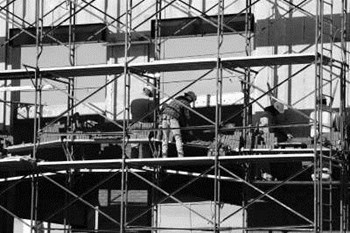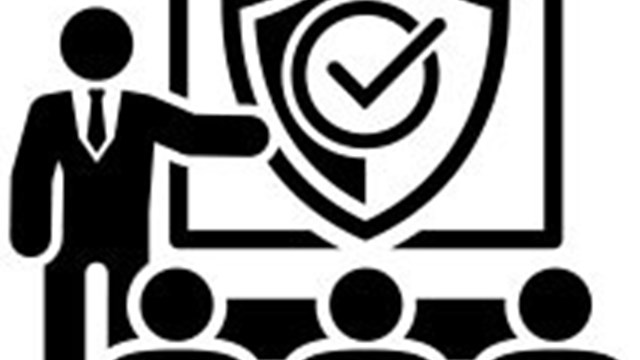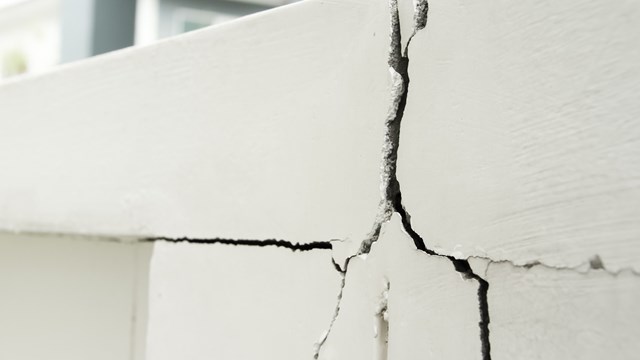
Over the past five years, we've driven crime down to historic lows. And as our city's crime rate continues to fall, positive economic indicators continue to rise. One of greatest signs of confidence in our city's future is the record number of construction projects going on throughout the five boroughs. This is great news for the more than 100,000 men and women who work in the building trades. But, as the number of construction projects has increased, so too, unfortunately, has the number of construction accidents. Although public safety is at an all-time high, we can and must do more to ensure worker safety.
This past November, a task force of experts convened by Deputy Mayor Carol Robles-Roman and Deputy Mayor Dan Doctoroff took a hard look at one of the riskiest areas of construction work: the suspended scaffolding industry. Suspended scaffolds are not the street-level sheds and support—scaffolds we see walking along the streets every day. They are the extended support structures that hang on the outside of buildings. If you look up, you can see the workers on these scaffolds washing windows or performing maintenance. This work can be very dangerous—because once you're up there, there really is no room for error. That's why every worker who goes up in a suspended scaffold should be trained, supervised, and wearing a safety harness. Tragically, six workers died last year in suspended scaffolding accidents because one or more of these precautions weren't taken.
Improving Worker Safety
Last week, the Scaffold Worker Safety Task Force released a report that included more than a dozen recommendations for improving safety. Already we've begun to implement these recommendations by introducing three new bills likely to gain support in the City Council. One will require builders to notify the Department of Buildings when using a C-hook scaffold—a common method of scaffold suspension that can be very dangerous, but is currently unregulated. A second will require construction supervisors to conduct daily inspections of scaffolding sites and keep detailed logs; and the third will increase penalties for safety violations. When lives are on the line, we can't just let people off with a warning—first offenses must result in meaningful penalties.
The strengthened laws will also give the DOB greater power to use stop-work orders. That means businesses that do not want to see their projects delayed—and their construction budgets increasing as a result—will put more pressure on contractors and subcontractors to follow the rules, and to keep their workers safe.
Task Force Recommendations
The task force submitted 13 recommendations regarding suspended scaffold outreach, training and enforcement. It is important to note that there are two main types of scaffolds—"suspended" and "supported"—and that the task force focused its recommendations on suspended scaffolds, which represent the majority of scaffolds and scaffold fatalities in NYC. In addition, as of November 19, 2006, oversight on supported scaffolds was increased with the implementation of Local Law 52, which requires a permit for any supported scaffold forty feet or more in height. The recommendations of the task force for suspended scaffolds are to:
1. Increase penalties for non-compliance with safety rules
2. Standardize inter-governmental procedures and improve inter-governmental coordination
3. Create a scaffold safety unit in the Department of Buildings
4. Require daily inspection logs
5. Require the notification of C-hook scaffolds
6. Spread out façade maintenance deadlines
7. Revamp rigger licensing requirements
8. Improve access to information on licensed riggers
9. Create inter-agency training requirements working group
10. Develop uniform certificate for completion of training
11. Increase training access, participation and completion
12. Widely distribute safety rules and contact information
13. Promote use of 311 to anonymously report unsafe conditions
This new legislation will go a long way towards improving safety, but—as the task force report recommended—we also need to dedicate more resources to enforcement, education, and outreach. Over the next four years, the city will establish a proactive scaffolding enforcement unit within the Department of Buildings. We will also work together with labor and immigrant advocacy groups to improve training and education programs and to communicate with workers in their neighborhoods and in their own languages.
The fact is that language barriers are a factor in many construction accidents. But by working together, we can make sure that safety comes first in every language. This is what we owe to the New Yorkers who are building a very bright future for our city.






Leave a Comment